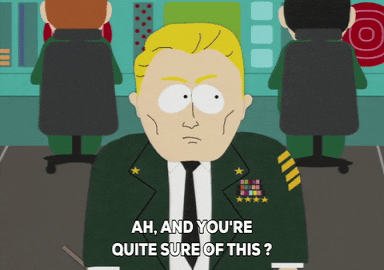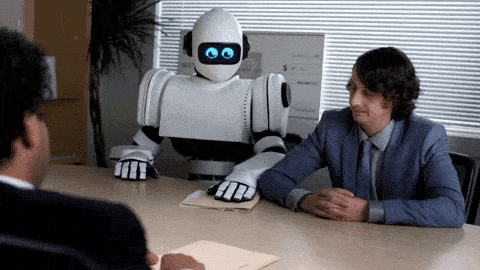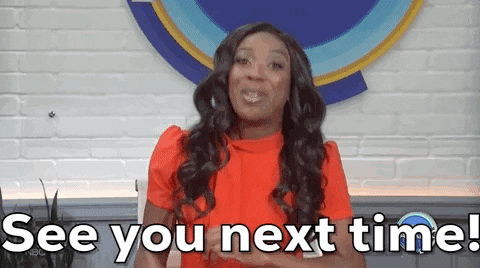Open AI Meets NSA, Mouse Jigglers & When To Take A Break
5 in 5 - Brave & Heart HeartBeat #206 ❤️
This week we're a little concerned about OpenAI's newest development in their villain origin story, we talk health warnings for social media, and we congratulate LinkedIn on their new AI features.
Plus, we ask are mouse-jigglers over, and how do you know you need to take a computer break?
Let’s get into it.
Were you forwarded this? Not a subscriber? 👉 Sign up here
#1 - OpenAI Goes Military
After phasing out their internal security team, i.e. the guys who check if the AI they’re putting out there is dangerous and going to kill us all one day, OpenAI have gone in an interesting direction by appointing a retired US Army General and former NSA (national Security Administration) director to their board.
While OpenAI are framing this as a dedication to cybersecurity in the context of the growing impact of AI technology, selling him as a “leading expert in cybersecurity”, not everyone is on board.
Among them is former NSA employee and (in)famous whistleblower Edward Snowden, who calls this a “mask off” moment, stating that “there’s only one reason for appointing” an NSA director to your board and urging everybody to never ever ever trust OpenAI or their products.
So, what is that one reason?
Well, if you didn’t know, the NSA has long been associated with mass surveillance of citizens in the US. With AI technologies already escalating existing concerns over spying and prying, this seems like a key moment in OpenAI’s strategy.
Look, we’re not accusing them of anything, but if this was an apocalyptic tech movie, kicking out the scientists and moving in an ex-army general WOULD be a key plot point in OpenAI’s villain development story…
#2 – Social Media Should Come With A Health Warning
Or at least, that’s what US Surgeon General, Vivek Murthy, thinks.
The US’ top health official is currently uring Congress to pass legislation which would force social media apps to display a warning stating “social media is associated with significant mental health harms for adolescents”.
The Surgeon General has been sounding the alarm on teens social media use for years, but it seems like the rest of the world is catching up to him – like the thousands of parents across the UK who have banded together to delay the moment their kids get a smarphone, and many more who are opting for “dump phones” to allow them to keep in touch without scrolling instagram.
Murthy referenced a 2019 study that found that risks of depression doubled among teens who scrolled for more than three hours a day, along with a poll from 2023 that showed US teens were logging a daily average of 4.8 hours on social media. Sound the alarms, they’re well past the danger zone.
Adding a warning label would likely lead parents to think twice before letting their kids loose on the world of social media, and as Murthy argued that social media was just as urgent a health risk as Boeing disasters, listeria dairy recalls and driverless cars.
LinkedIn wants to help you find a job using AI, and to be honest, it seems like a pretty good idea.
They’re using the features to help users find the right jobs for them, tailor their CVs to the jobs that they’re applying to, and get career advice from chatbots. For a price, of course, as the features will only be available to Premium subscribers.
When it comes to looking for a job, the AI features will allow you allow to search for a position in “natural language”. Meaning you could type in “find me a remote marketing job in Detroit that pays at least 110,000 dollars” – according to their example, and the search engine would bring those up for you.
You will also be able to upload your CV and get real-time tips on how to edit it, along with an AI tool that helps you write a cover letter (which makes the cover letter kind of useless, but okay…).
LinkedIn is also apparently in the process of testing out chatbots which will work like Meta’s celeb chatbots but to give you career advice. They describe them as being “trained by experts” with a “blend of insights that are personalised to each learner’s unique needs”.
While it may give premium candidates an unfair leg-up when it comes to the job search, don’t hate the player, hate the game…
#4 - The “Mouse Jiggler” Era Comes To An End
If you haven’t heard of a mouse jiggler, then you’ve missed the party because the cat is out of the bag, as it were.
Mouse-jigglers come in a few different forms, from apps that trigger phantom keyboard entries to little gadgets that literally move your mouse, and while they’ve existed for years their popularity skyrocketed during the pandemic after work from home became commonplace.
For companies that rely on software to monitor the laptop use of their remote employees to make sure that they’re actually at their laptops and being productive, the mouse-jigglers were used by employees to basically pretend to be working.
However, as remote work became the norm for many, these productivity monitoring tools have become more sophisticated, and in some cases are now able to spot the patterns that show a mouse-jiggler is in use.
And now the first reported cases of employees being fired for the use of this technology comes as Wells Fargo fired over a dozen employees after an investigation revealed they were using these productivity simulation devices.
The employees in question were part of their wealth-and-investment-management unit, and how they were getting away with keeping their jobs while doing so little that they had to turn to the mouse-jigglers for help is a mystery to us. Or, probably, they weren’t doing enough – a mouse-jiggler can only move your mouse, it can’t manage an investment portfolio.
This signals the end of an era for the naughty people cheating the productivity measurements, and while we don’t condone it, nor do we condone a work environment which relies on the toxic practice of employee surveillance, and measures productivity on the amount of movements a mouse makes per minute.
#5 - Do You Need A Coffee Break?
Sure, actually working is the best way to be productive, but if you’re stuck sitting at your desk and getting nothing done, it may be a sign you need a little break. If you see any of these signs, you probably need to take a little trip to the coffee machine…
1 – Screen Glaze
If you catch yourself looking at your computer and just reading the same thing over and over without taking anything in, it’s time to stop. You can spend as long as you like staring at your screen, if you no longer have a clue what you’re looking at, you’re not getting anything productive done. It’s over. Take a break, come back to it.
2 – Screen Apnea
Screen apnea happens when you’re too engrossed in your screens, and leads to irregular breathing patterns. It can heighten stress and diminish focus due to altered blood oxygen and carbon dioxide levels. So, if you find yourself holding your breath while looking at emails, you’ve gone too far.
3 – Digital Drift
Digital drift is a funny one because we were guilty of this without knowing what it is. Basically, you know you need to get work done so you stay on your laptop, but your hearts no longer in it, so what do you do, you drift away into other digital pastimes, such as scrolling LinkedIn, online shopping or going down a YouTube black hole. You’re no longer working, but you’re not resting either – actually get away from the screen, and then you’ll come back and actually be able to work, rather than wasting the day scrolling Buzzfeed.
Watch out for these ones, and we promise you you’ll be able to get a bit more done.
Brave & Heart over and out.
Bonus
Fake Families
Some young people in China are turning to family influencers to get that warm fuzzy feeling that some of their parents can’t give them.
To find out more on how you can retain your top talent, or how we can help you with digital solutions to your business and marketing challenges, check out our case studies.



